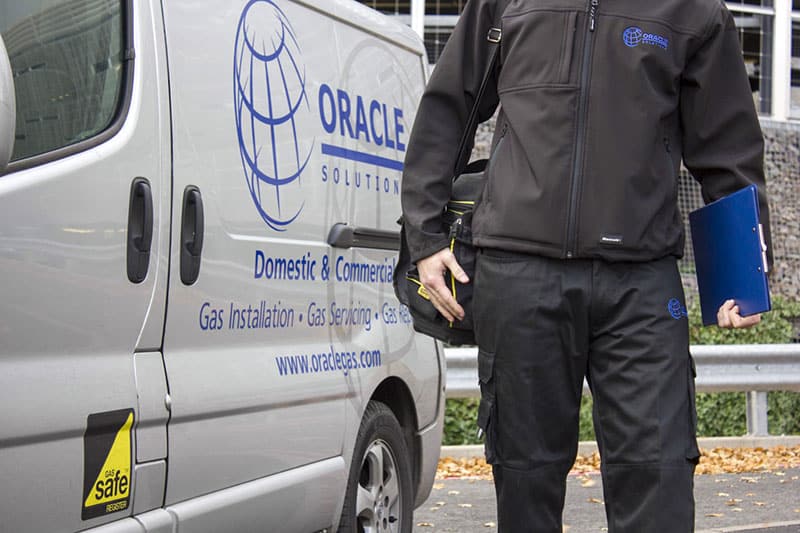How do you test for asbestos in your home?
Asbestos is a naturally occurring fibrous mineral that was once widely used in the construction of commercial and residential buildings. Its fireproofing and insulation abilities, combined with its low cost and wide availability, made it an extremely common and useful construction material.
However, once its serious health effects were well known — asbestos exposure can lead to mesothelioma and other cancers and respiratory conditions — the UK banned it in 1999. That means that asbestos still exists in most buildings constructed before 2000.
If you own a home that was built prior to 2000, it’s important to have it tested for asbestos. Since asbestos was once so prevalent, it can be present in all sorts of materials and areas of your property, both inside and outside the home.
In this article, we’ll discuss how you can test for asbestos in your home to ensure the safety of yourself and the other members in your household. We’ll also talk about the process that asbestos professionals use and why hiring an expert is often the safest course of action.
How do you identify potential asbestos in your home?
When you go over a list of the common places where asbestos can be found, it seems like it’s all around you. That’s why it’s so important to have a specialist assess your home for its presence.
Asbestos was regularly used in:
- Boarding and panelling
- Boilers and heaters
- Cement
- Door and window panels
- Fuse board panels and guards
- Pipe insulation
- Roofing, including downpipes, gutters, and roof coverings
- Textured coatings
- Toilet cisterns and seats
- Vinyl floor tiles
- Water tanks
If you know where asbestos typically is in a home, you may be able to find ACMs and assess their condition yourself. Since most people don’t have experience looking for asbestos, though, the safest option is to have a survey conducted by an asbestos expert.
Remember, the year the home was built or the last time it was renovated will play a role in how much asbestos may be present. Since asbestos was banned in 1999, any buildings constructed in 2000 or later shouldn’t contain it.
Also, if a home was built before 1999 but renovated after 2000, removal work may already have been carried out to remove the material from the property. In that case, though, you may still want to hire an asbestos testing professional to ensure it’s all gone.
What steps do you need to take to prepare for asbestos testing?
You don’t need an asbestos licence in order to take a sample, though hiring a professional is always the safest option. Whether you’re taking the sample yourself or having a professional do it, follow these safety precautions during the preparation stage:
- Turn off any ventilation systems, including your AC, fans, and heating system. If you leave them running, they could circulate the air and spread airborne asbestos fibres around.
- Make a plan to close off the area. Nobody should be allowed in the room while the sample is being taken.
- Your safest option is to have everyone leave the house while the contractor is there to take a sample.
If you don’t think that any construction materials are degrading, you may opt not to have asbestos testing right now. However, if you want to be as safe as possible or if you’re planning a construction project for your home, testing is an important step to ensure everyone’s safety.
Where can you get the samples tested for asbestos?
We have a comprehensive guide of all the places to check for asbestos in a domestic property. It helps to prioritise certain areas above others based on several factors, such as the likelihood of asbestos presence or the home’s history of damage or renovations.
Here are a few guidelines for determining where to focus first:
- Check the building materials that most commonly have asbestos: ceiling and floor tiles; roofing materials; insulation; and textured coatings. See if they’re damaged.
- Focus on areas that have had modifications or renovations. Those changes could have damaged ACMs without anybody realising it.
- Test the areas where the people in your home spend most of their time, like the kitchen, lounge, dining room and bedrooms. The more a person is around asbestos, the higher their chances of being exposed.
- Prioritise testing in areas with damaged or aging ACMs.
Whether you’re surveying your house for asbestos or simply keeping an eye on your home, look out for the warning signs that a material is breaking down or degrading. If the material that’s breaking down contains asbestos, it could be releasing toxic fibres as it continues to wear.
Here are the red flags to watch out for:
- Disintegrating materials, especially with insulation, stovetop pads, vinyl flooring, etc.
- Cracks where a material is starting to break apart
- Dusty areas that indicate a nearby material may already be falling apart
Prioritising certain areas doesn’t mean ignoring the others. Instead, it’s a way to mitigate the highest risks first before moving to the lower-risk areas of your home.
Who tests the asbestos samples?
While the Health and Safety Executive (HSE) oversees asbestos regulations in commercial buildings, the website also has good advice for anyone who is hiring an asbestos sampling company, including homeowners.
Sample analysis is the only way to determine if a material includes asbestos. Only a skilled specialist at an analytical laboratory should carry out sampling. Ideally, the analyst and/or lab will be accredited by the United Kingdom Accreditation Service, or UKAS.
You can find a list of UKAS-accredited testing labs here.
What is the asbestos sampling and testing procedure?
If you opt to handle asbestos sampling on your own, only take a sample if a piece of the material has already broken off the ACM. Otherwise, don’t try to break the ACM yourself, because that can release dangerous asbestos fibres into the air.
Also, even if the ACM is already broken, don’t try to move the piece if it will spread debris or dust. And always be careful where you walk. You can spread asbestos fibres if they get stuck to your shoes or if you kick up asbestos dust or debris.
To safely send in a sample for testing, first dampen it to prevent fibres from releasing. Then, put it in a self-sealing polythene bag, which you’ll then put in a second self-sealing bag. Clearly label the bag, too. The sample can then be analysed at a laboratory with UKAS accreditation.
How do asbestos professionals take a sample?
When you hire an asbestos professional, they’ll first survey the home to locate all of the ACMs on the premises. Here’s what happens next:
- They’ll get dressed in protective gear.
- They’ll lay down plastic sheeting and secure it so it doesn’t move.
- The area is sprayed with water to prevent fibres from escaping.
- Hand tools are used to take a small sample for testing.
- The contractor will double-seal and label the asbestos sample to send to the lab.
- The area that was worked on will be patched to prevent fibres from spreading.
Another reason why it’s best to have a professional take the sample is because they’ll have the necessary safety gear, like personal protective equipment and respiratory protective equipment.
If you’re not able to wear the proper clothing, boots, gloves, etc., while working with asbestos, you could inhale asbestos fibres without realising it. Disposing of clothing that’s been exposed to asbestos also has its own protocols.
What next?
Typically, following sampling, asbestos testing takes 48 to 72 hours. You may also be able to get a fast-track testing service for same-day or next-day results if you need them quicker, like in an emergency situation.
The type of asbestos work the individual or team carries out will determine the type of paperwork you get in return. For example, if you want a complete asbestos survey, you’ll get a full report once it’s finished. If you only want asbestos sampling, you may get a Certificate of Analysis instead.
If no asbestos is detected, you don’t have to take any further steps. However, if testing does find that ACMs are present, your next step should be to consult with an asbestos management company. (It’s likely that the sampling company you hired also handles asbestos management.) They can tell you the next best steps to monitor, encapsulate, or remove the ACMs in your home.
Final thoughts about how to test for asbestos in your home
Older homes that were built before 2000 are very likely to contain asbestos because the material was so popular before its ban. Testing for asbestos in your home is the only way to ensure that your loved ones are safe from asbestos exposure and the life-threatening health impacts it can cause in the future.
Homeowners should take proactive steps to test for asbestos. Once an ACM is damaged or disturbed, the fibres become airborne, and it’s too late to prevent an exposure event. As soon as you suspect that asbestos is present, the best option is to contact a professional to conduct a survey, take a sample, and perform testing.
Contact Oracle Solutions today to discuss setting up an asbestos survey, sampling, and testing.

Written by Brendan Coleman
Brendan Coleman, with decades of experience in the asbestos industry, is a dedicated Quality Manager. Certified as a surveyor and analyst, he is adept in operations and quality management with a keen focus on HSE compliance. His expertise is pivotal in maintaining high safety and efficiency standards. Brendan ensures our UKAS accreditation requirements are consistently met and exceeded, upholding stringent standards in asbestos remediation. His commitment to enhancing quality and customer satisfaction makes him an essential advisor in asbestos management.

